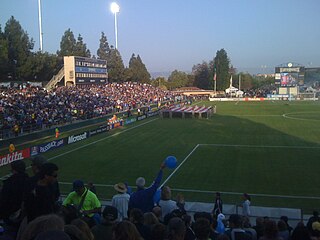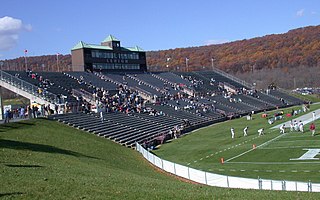
A box camera is a simple type of camera, the most common form being a cardboard or plastic box with a lens in one end and film at the other. They were sold in large numbers during the late 19th and early 20th centuries. The lenses are often single element designs meniscus fixed focus lens, or in better quality box cameras a doublet lens with minimal possible adjustments to the aperture or shutter speeds. Because of the inability to adjust focus, the small lens aperture and the low sensitivity of the sensitive materials available, these cameras work best in brightly lit day-lit scenes when the subject is within the hyperfocal distance for the lens and of subjects that move little during the exposure. Eventually, box cameras with photographic flash, shutter and aperture adjustment were introduced, allowing indoor photos.

The Wason selection task is a logic puzzle devised by Peter Cathcart Wason in 1966. It is one of the most famous tasks in the study of deductive reasoning. An example of the puzzle is:
You are shown a set of four cards placed on a table, each of which has a number on one side and a color on the other. The visible faces of the cards show 3, 8, blue and red. Which card(s) must you turn over in order to test that if a card shows an even number on one face, then its opposite face is blue?
Insight is the understanding of a specific cause and effect within a particular context. The term insight can have several related meanings:

Problem solving is the process of achieving a goal by overcoming obstacles, a frequent part of most activities. Problems in need of solutions range from simple personal tasks to complex issues in business and technical fields. The former is an example of simple problem solving (SPS) addressing one issue, whereas the latter is complex problem solving (CPS) with multiple interrelated obstacles. Another classification of problem-solving tasks is into well-defined problems with specific obstacles and goals, and ill-defined problems in which the current situation is troublesome but it is not clear what kind of resolution to aim for. Similarly, one may distinguish formal or fact-based problems requiring psychometric intelligence, versus socio-emotional problems which depend on the changeable emotions of individuals or groups, such as tactful behavior, fashion, or gift choices.

Dell Diamond is the home stadium of the Round Rock Express, the Triple-A Minor League Baseball affiliate of the Texas Rangers major league baseball team. On April 16, 2000, the then-Double-A affiliate Express played their first home game at the stadium.

Plaster Stadium is a 17,500-seat football stadium located in Springfield, Missouri. It is home to the Missouri State Bears football team.

L.P. Frans Stadium is a stadium in Hickory, North Carolina. It is primarily used for baseball, and is the home field of the Hickory Crawdads Minor League Baseball team of the South Atlantic League. It was built in 1993 and has a fixed seating capacity of roughly 4,000.

Fluor Field at the West End is a 6,700-seat baseball-only stadium in Greenville, South Carolina, that opened on April 6, 2006. Designed by architectural firm DLR Group, it was built as a new home of the Greenville Drive baseball team, the High-A East affiliate of the Boston Red Sox.

Stevens Stadium is a 7,000-seat soccer stadium on the west coast of the United States, located on the campus of Santa Clara University in Santa Clara, California. The stadium is the current home of the Santa Clara Broncos soccer teams and was the former home of the now-defunct football team as well as the baseball team. The baseball team moved to their new home at Stephen Schott Stadium in 2005.
Functional fixedness is a cognitive bias that limits a person to use an object only in the way it is traditionally used. The concept of functional fixedness originated in Gestalt psychology, a movement in psychology that emphasizes holistic processing. Karl Duncker defined functional fixedness as being a mental block against using an object in a new way that is required to solve a problem. This "block" limits the ability of an individual to use components given to them to complete a task, as they cannot move past the original purpose of those components. For example, if someone needs a paperweight, but they only have a hammer, they may not see how the hammer can be used as a paperweight. Functional fixedness is this inability to see a hammer's use as anything other than for pounding nails; the person couldn't think to use the hammer in a way other than in its conventional function.

Goodman Stadium is Lehigh University's 16,000-seat stadium located on its Goodman Campus in Lower Saucon Township, Pennsylvania. It opened in 1988, replacing Taylor Stadium, which stood in the main academic campus from 1914 until 1987. The former Taylor Stadium site now holds the Rauch Business Center, the Zoellner Arts Center, and a parking garage.

The Cartercar was an American automobile manufactured in 1905 in Jackson, Michigan, in 1906 in Detroit, and from 1907 to 1915 in Pontiac, Michigan.

Bowen Field House is a 5,400-seat multi-purpose arena in Ypsilanti, Michigan on the Eastern Michigan University campus. It opened in 1955 and was home to the Eastern Michigan Eagles men's and women's basketball teams until the Convocation Center opened in 1997. It currently serves as the home of Eastern Michigan Eagles track and field, Eastern Michigan Eagles wrestling, and Eastern Michigan Eagles gymnastics.
In software engineering, graphical user interface testing is the process of testing a product's graphical user interface (GUI) to ensure it meets its specifications. This is normally done through the use of a variety of test cases.

Dickey–Stephens Park is a baseball park in North Little Rock, Arkansas, United States. The ballpark is primarily used for baseball and serves as the home for the Arkansas Travelers of the Texas League. The capacity of the ballpark is 7,300 which includes 5,800 fixed seats capacity and 1,500 on the berms. It opened in 2007 as a replacement for Ray Winder Field in Little Rock, Arkansas. The ballpark is named after four local Arkansas brothers: Baseball Hall of Famer Bill Dickey, former Major League Baseball catcher George Dickey, and businessmen Jackson T. Stephens and W. R. Stephens.
Einstellung is the development of a mechanized state of mind. Often called a problem solving set, Einstellung refers to a person's predisposition to solve a given problem in a specific manner even though better or more appropriate methods of solving the problem exist.
Karl Duncker was a German Gestalt psychologist. He attended Friedrich-Wilhelms-University from 1923 to 1923, and spent 1925–1926 at Clark University in Worcester, MA as a visiting professor, where he received a master's degree in arts degree. Until 1935 he was a student and assistant of the founders of Gestalt psychology in Berlin: Max Wertheimer, Wolfgang Köhler and Kurt Koffka. In 1935, exiled by the Nazis, he got an assistantship in Cambridge with Frederic Charles Bartlett and later immigrated to the US, where he was again an assistant of Wolfgang Köhler's at Swarthmore College. Duncker committed suicide in 1940 at 37 years of age. He suffered from depression for some time and had received professional treatment.

The eureka effect refers to the common human experience of suddenly understanding a previously incomprehensible problem or concept. Some research describes the Aha! effect as a memory advantage, but conflicting results exist as to where exactly it occurs in the brain, and it is difficult to predict under what circumstances one can predict an Aha! moment.
Systematic Inventive Thinking (SIT) is a thinking method developed in Israel in the mid-1990s. Derived from Genrich Altshuller's TRIZ engineering discipline, SIT is a practical approach to creativity, innovation and problem solving, which has become a well known methodology for innovation. At the heart of SIT's method is one core idea adopted from Genrich Altshuller's TRIZ which is also known as Theory of Inventive Problem Solving (TIPS): that inventive solutions share common patterns. Focusing not on what makes inventive solutions different – but on what they share in common – is core to SIT's approach.
Sam Glucksberg was a Canadian professor in the Psychology Department at Princeton University in New Jersey, known for his works on figurative language: metaphors, irony, sarcasm, and idioms. He is particularly known for manipulating the Candle Problem experiment which had participants figure out the best way to erect a candle on a wall. Along with performing experiments, Glucksberg has also written Understanding Figurative Language: From Metaphors to Idioms, published by Oxford University Press in 2001.













